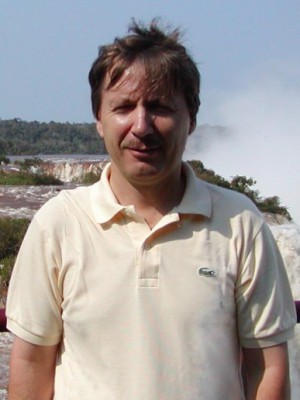resumo
Gd-doped ceria (CGO), one of the most extensively studied oxygen ion conductors, is a low dielectric constant/low mechanical compliance material exhibiting large nonclassical electrostriction. The electromechanical response of the micro-electromechanical devices with CGO films as an active material described previously can not be attributed exclusively to electrostriction. Here it is shown that, below 1 Hz, in addition to electrostriction (second-harmonic response), there is a strong contribution of the electro-chemomechanical effect (ECM, first harmonic response). ECM is the change in mechanical dimensions of ionic and mixed ionic-electronic conductors as a result of a change in chemical composition induced by an electric field. In batteries, the presence of ECM is highly detrimental. In ceria at room temperature, it was considered to be negligible because of slow oxygen diffusion. This work demonstrates ECM actuation at ambient temperature and moderate electric field (<5 V mu m(-1)). ECM-induced strain is attributed to reversible oxidation/ reduction of TiO2 layers at the Ti-CGO interface. At 25 degrees C, the ECM bending strain is 1.2 x 10(-6), increasing exponentially with temperature. These data suggest that with a proper choice of materials, ECM-type response can be a viable mechanism for mechanical actuation at ambient and also at slightly elevated temperatures.
palavras-chave
CHEMICAL EXPANSION; THIN-FILMS; ELECTROSTRICTION; TEMPERATURE; CONVERSION
categoria
Chemistry; Materials Science
autores
Mishuk, E; Ushakov, A; Makagon, E; Cohen, SR; Wachtel, E; Paul, T; Tsur, Y; Shur, VY; Kholkin, A; Lubomirsky, I
nossos autores
agradecimentos
This work was supported in part by the Israeli Ministry of Science and Technology within the program of Israel-Russian Federation Scientific Collaboration, grant #12421-3 and by the Israeli Ministry of Science and Technology grant #3-12944. The equipment of the Ural Center for Shared Use Modern Nanotechnology UrFU was used. This research was made possible in part by RFBR (Grant No. 15-52-06006 MNTI_a), the Ministry of Science and Higher Education of the Russian Federation (Projects Nos. 3.9534.2017/BP and 3.4993.2017/6.7), and the Government of the Russian Federation (Act 211, Agreement 02.A03.21.0006). This work was developed within the scope of the project CICECO-Aveiro Institute of Materials, FCT Ref. UID/CTM/50011/2019, financed by national funds through the FCT/MCTES.


